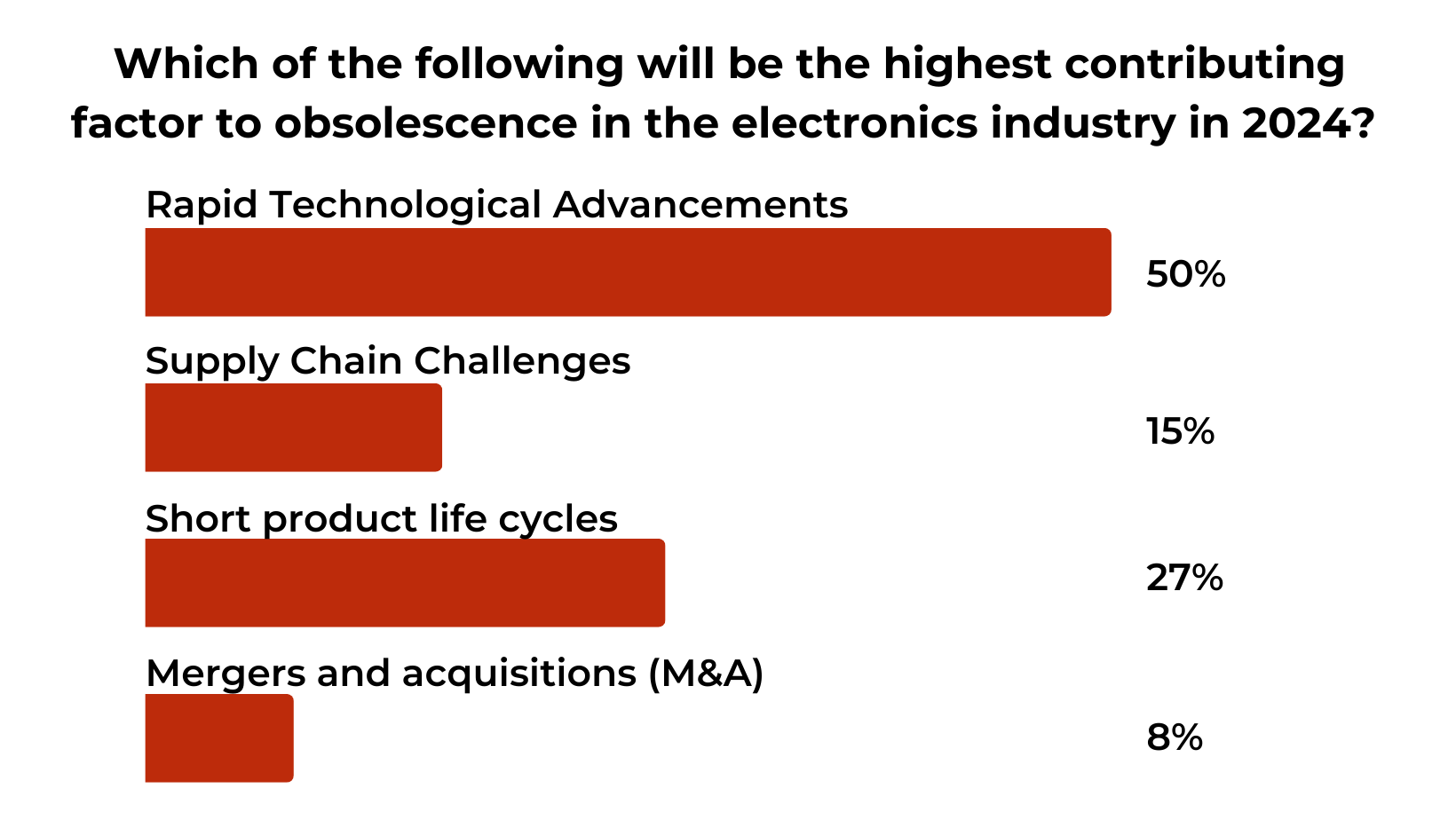Contributing Factors to Obsolescence
In a recent LinkedIn poll conducted by the FOM Community, participants expressed their opinions on the key factors contributing to obsolescence in the electronics industry for 2024. The results shed light on the importance of rapid technological advancements, shorter product life cycles, supply chain challenges, and the impact of mergers and acquisitions. This blog will delve deeper into these results, exploring the implications they hold for the electronics industry.
Rapid Technological Advancements
The most significant factor leading to obsolescence this year, with half of the participants selecting this option, was the rapid advancements in technology. This is not surprising, given the current pace at which technology is evolving. Older devices quickly become outdated as new innovations emerge, leaving consumers and the industry seeking the latest features and advancements. Manufacturers must constantly adapt to these advancements, leading to a shorter shelf life for their products.
Shorter Product Life Cycles
The second highest influence on growing obsolescence, according to the poll, is shorter product life cycles, with 27% of respondents choosing this option. In an era with such rapid technological advancements, manufacturers expect customers to replace their technology within a few short years. Taking consumer electronics as an example, the expected lifespan of smartphones is just nearly 2.5 years. These shorter product life cycles result in parts often becoming obsolete before their functional lifespan is even reached.
Supply Chain Challenges
The poll also revealed that supply chain challenges (15% chose this response) are expected to continue to impact the volume and frequency of parts becoming EOL. The global electronics supply chain is complex and interconnected; various factors, such as trade disputes, disruptions in raw material supply, and shifts in manufacturing locations easily influence it. These challenges lead to delays in production, limited availability of specific components, and ultimately, the rapid obsolescence of certain products.
Mergers and Acquisitions
Interestingly, mergers and acquisitions were identified as the least significant factor contributing to obsolescence for 2024, with only 8% of respondents selecting it. While this result may seem surprising, it suggests that participants perceive other factors, such as technological advancements and product life cycles, to have a more substantial impact. However, it is worth noting that mergers and acquisitions can still disrupt product lines and support systems, potentially leading to the discontinuation of certain products or reduced access to updates and repairs.
How can individuals and organizations alike manage each of these factors of obsolescence?
As the industry evolves, addressing these factors becomes crucial to mitigate obsolescence. Staying on top of the trends and impacts to the ever-changing landscape is paramount, but it shouldn’t be done in a vacuum. When we collectively work together to build true resiliency, we can achieve managing the growing obsolescence. Subscribe to our Future of Obsolescence Management community and gain access to cutting-edge insights, expert analysis, and invaluable resources. By signing up, you’ll join a like-minded community of industry professionals who are dedicated and passionate about writing the future of obsolescence management, together. Receive curated content, exclusive interviews with industry leaders, in-depth analysis, and real-world success stories directly to your inbox with our e-newsletter. Don’t miss out on this opportunity, sign up today!
Disclaimer: The results of this poll are based on opinions expressed by participants and may not fully represent the overall industry trends or future developments.
